After a pandemic induced break, India’s premier arts festival, Serendipity is back on ground in Goa for its fifth edition. Once again showcasing a curated range of exhibitions, live performances and marketplace, this unique showcase of the arts in India delights and broadens horizons. Smriti Rajgarhia, Director, Serendipity Arts Foundation and Festival, sheds light on the continuing significance of the festival’ in an interview to Suman Tarafdar. We bring you the excerpts.
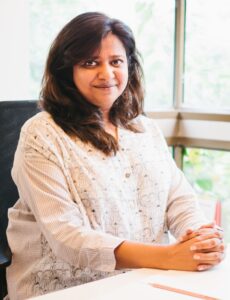
Smriti Rajgarhia
Congratulations on the fifth edition of the festival. What are the highlights of the upcoming edition? What are the new elements for this edition?
We are very happy to be back with the festival in Panjim, Goa. The festival aims at being a sustainable one with a continued focus on the interdisciplinarity of the arts. The festival in its fifth edition would be taking the arts beyond the white cube and proscenium spaces. The festival will continue to uphold its fundamental values of sustainability, inclusivity, and accessibility with a marketplace focusing on homegrown, sustainable products and produce workshops and for those with special needs, along with dedicated children’s programs.
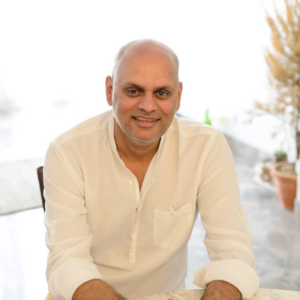
Pramod-Kumar-KG
Curating the section on Craft, Pramod Kumar KG will highlight the world of specialist books on the art history of India through a uniquely immersive exhibition, and Anjana Somany will enliven the world of craft and its rich traditions of materiality through space-making. Quasar Thakore Padamsee will helm the Theatre segment of the festival that will showcase an eclectic selection of plays, and Ehsaan Noorani will curate Music with a wide range of live concerts covering a multi-genre range of classical, folk, indie pop, and rock. Geeta Chandran and Mayuri Upadhya will put together an array of classical, experimental and contemporary dance performances. Visual Arts curators Sudarshan Shetty and Veerangana Solanki are curating the visual arts section of the festival with a focus on film as well as the transition from digital to physical. Prahlad Sukhtankar will curate the important Culinary quotient of Serendipity Arts Festival through community meals and a series of workshops decoding food as we know it.
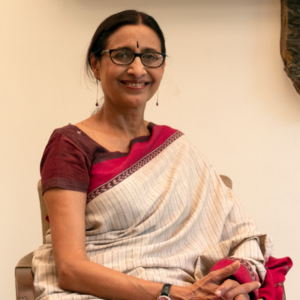
Anjana-Somany
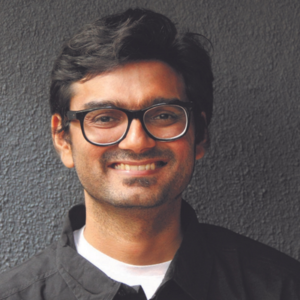
Quasar-Thakore-Padamsee
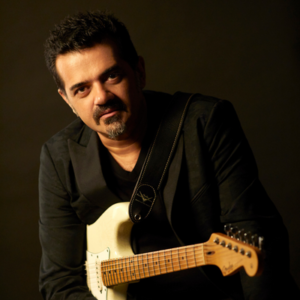
Ehran-Noorani
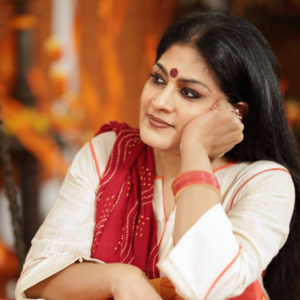
Geeta-Chandran
In the gap of about two years the world around us has changed a lot with new sensibilities and social contracts centered around technology. Arts has been deeply impacted by the change in a post pandemic and post- digital world. It has found ways to flow into the digital mediums through various carriers, NFT’s being one of them, that has remained topical and brought forth conservation and sustainability for the creative expressions in an ever-changing world. The programming of the Festival is not bereft of that, projects like Somewhere Ethereal by Mathieu Wothke and Terra Nullius: Excavations from Image 3.0 by Pascal Beausse and Rahaab Allana aims to inform visitors to this change in trend.
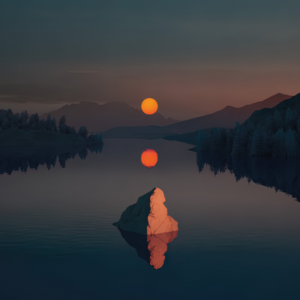
‘Somewhere Ethereal’ by Mathieu Wothke
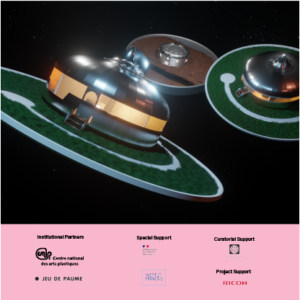
Terra Nullius: Excavations from Image 3.0 by Pascal Beausse and Rahaab Allana
The Covid era impacted arts and crafts adversely to quite an extent. How was the festival impacted? What have been the main learnings from the impact of Covid?
Challenges are often opportunities in disguise that help us explore newer territories that we haven’t explored yet. The arts always emerge from difficult times can help unite people. The pandemic was a similar experience for us, as it gave us an opportunity to think beyond traditional spaces and explore the internet as a site and readapt to the space. We have been fortunate to have received and extended support to the ecosystem, which resulted in multiple digital initiatives to help dislodge the sudden void and disconnect that the pandemic brought. We tackled the crisis with innovation and did two virtual festivals, which were very well received and widely supported, as it gave the ecosystem an opportunity to be in touch, and collaborate, transcending geographical barriers.
An important learning for us has been the power of empathy, to be able to step into each other’s shoes and attempt to understand the different perspectives. There is great strength in joining forces to help each other up and building a community, that way not only do we support the ecosystem, but also create a strong foundation for tomorrow.
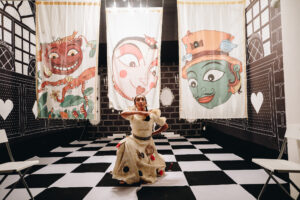
Once-Upon-A-Time-Curated-By-Mayuri-Upadhya-for-the-Serendipity-Arts-Festival-2019.
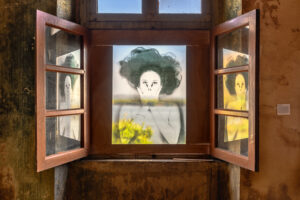
Freedom-from-Fear-by-Mayco-Naing-as-a-part-of-Look-Stranger-Curated-by-Rahaab-Allana-Serendipity-Arts-Festival-2019-
How is the festival implementing interdisciplinarity, especially as the arts and crafts in India have tended to function separately from each other? What advantages does interdisciplinarity bring to a multi-dimensional festival such as Serendipity?
Historically, interdisciplinarity has been an integral part of the arts, especially in our region. The festival is recharging these allied sensibilities and counting on the power of collaboration to engage our visitors. The programming this year gives good weightage to interdisciplinarity, which will be further explored by our curators and special project curators through their projects, intersecting dance, drama, music and storytelling, making for a truly interdisciplinary offering.
The biggest takeaway that interdisciplinarity as an attribute presents to the audience visiting our festival is that it will give them tools to re-imagine creative boundaries and look at the arts from a renewed perspective. It will lend them the lens to experience the arts as a unified medium of creative expressions and liberate the mind from looking at the arts in silos. Apart from that, interdisciplinarity opens up a wide range of collaborative avenues for the artists, who can then interact with each other’s creativity and respond in artistic manners. This spirit of collaboration forms the bedrock of an arts festival like ours, where myriad creative expressions find a bigger canvas and enhance an art form’s effectiveness, to inspire and engage.
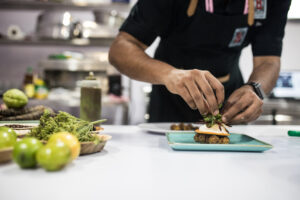
Chefs-Legacy-Thomas-Zacharias-curated-by-Rahul-Akerkar-for-Serendipity-Arts-Festival-2019
How much of a challenge is it to get the ‘right’ audience to the festival? Given the scope and depth of the festival, to what extent is the festival able to reach out to different segments of audiences nationally?
Getting to the right kind of audience is not the biggest challenge, the bigger one is to get to a wider audience. Often such gatherings give an impression of exclusivity and intimidate people from attending, which is why we consciously plan to engage and involve diverse communities to come and experience the celebration of our shared cultural heritage, traditions and practice. Plus, it’s always an artist’s desire to make their artwork reach out and interact with as many minds as possible, partly why our digital initiatives were successful too. We made sure to have something for everyone, all ages, transcending social biases and differentiators.
Our programming is consciously diverse and covers traditions from across the regions of South Asia, which appeals to people from different parts of the country and the region and we try to publicize the festival in various parts of the country and even globally through our partners and patrons in equal proportions to engage a wide segment of audience not only just nationally, but globally.
How is the festival looking to engage with the locals? Is there any measure by which the success of the past editions of the festival are being estimated? Are there local tie-ups with hotels, cultural institutions, tourism bodies etc that wi
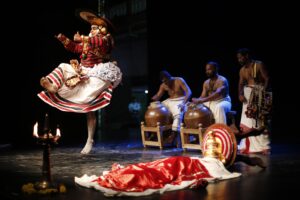
Urubhangam-directed-by-G.-Venu-and-curated-by-Arundhati-Nag-at-PWD-for-the-Serendipity-Arts-Festival-2018-Goa
ll channel audiences to the festival?
Community engagement is a big reason for the successful editions of the festival over the years. The engagement of the
festival with the local community and city is yearlong, like activating public spaces through the arts and lending creative inputs to city infrastructures like sorting stations etc. The festival also directly and indirectly employs thousands in Panjim and people from other parts of Goa, to support the entire festival at its various fronts, including production, logistics, hospitality industry, local artists, generating income for many.
There are many yardsticks to measure the success of the festival, however the ones that give us a clear idea of our impact is the recall we have among our audience and the love and support we have been receiving for the festival, across the globe. The memories and the moments created at the festival are our biggest treasures and there has been a steady change of outlook towards the arts by the authorities, global communities and residents, who now look forward to the festival and wait for it around the year. The numerous enquiries and proposals for participation received by our teams showcase the popularity of the festival and we love the fact that people now curate their own personal itineraries, instead of us constantly pointing them towards something and they have really made it their own. A great deal of this has been achieved due to the inclusion of accessibility to the arts, that is core to our mandate which makes the experience more immersive and engaging.
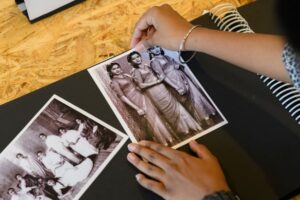
Goa-FamiliaCurated-by-Lina-Vincent-Akshay-Mahajan-Image-from-SAF-2019
We have partnered with the Government of Goa, Corporation of the City of Panaji, Goa Forest Department, Directorate of Art & Culture, Goa and the Entertainment Society of Goa since the inception of the festival and that has remained unchanged. These entities will be promoting the festival on its mediums and circles. Apart from that, we have a chain of local partners and collaborators, including schools and colleges, who have been sending their students to the festival as volunteers and organizing field trips for school students. We have also over the years partnered with several local media houses, co-working spaces, hotels, cafes and restaurants that will promote and publicize the festival.
How is the festival looking at aiding sustainability in the arts?
The Foundation was built around a mandate to develop platforms that would enhance arts production in the region of South Asia and create opportunities for both existing and emerging artists. The festival, as an initiative, is the way for us to ensure the implementation of this mandate. The festival year-on-year looks at diverse creative expressions and reimagines the ways in which it can be presented to keep the interest of the artists and audiences alike. This allows us to keep the ball rolling year-round and engage with artists during the festival, sharing with them a perennial platform for innovation, imagination and exhibition. We have a large inventory of material that is reused and shared between artists and we try to find the best ways in which to best adhere to sustainable and green practices without compromising on quality.
Given that it’s a largely non ticketed festival, how much is the budget for the festival, and what are the main sources of revenue for the festival?
The budget of the festival depends on the nature and the scale of the project that the curators propose and then our teams reach out to our patrons and partners to give us the support needed to realize projects. We are a not for profit and we don’t make any money from the festival.
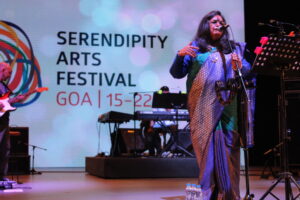 Pre Covid, the festival was looking at editions of the festival in other cities. Is that still on the cards? If so, where else will the festival be seen?
Pre Covid, the festival was looking at editions of the festival in other cities. Is that still on the cards? If so, where else will the festival be seen?
We are yet to decide on that since things are slowly opening and for us ensuring the safety of the artists, our teams and the public are paramount.
Any other facet of the festival that is important to note?
The Festival was built with keeping in mind the opportunity for everyone to interact and engage with the arts in their own preferred ways. We have programmed the festival in a manner that it has something for everyone, right from the age of 6 to the age of 60. We invite everyone to come and experience the festival at least once and go back with a renewed perspective and infinite possibilities.
